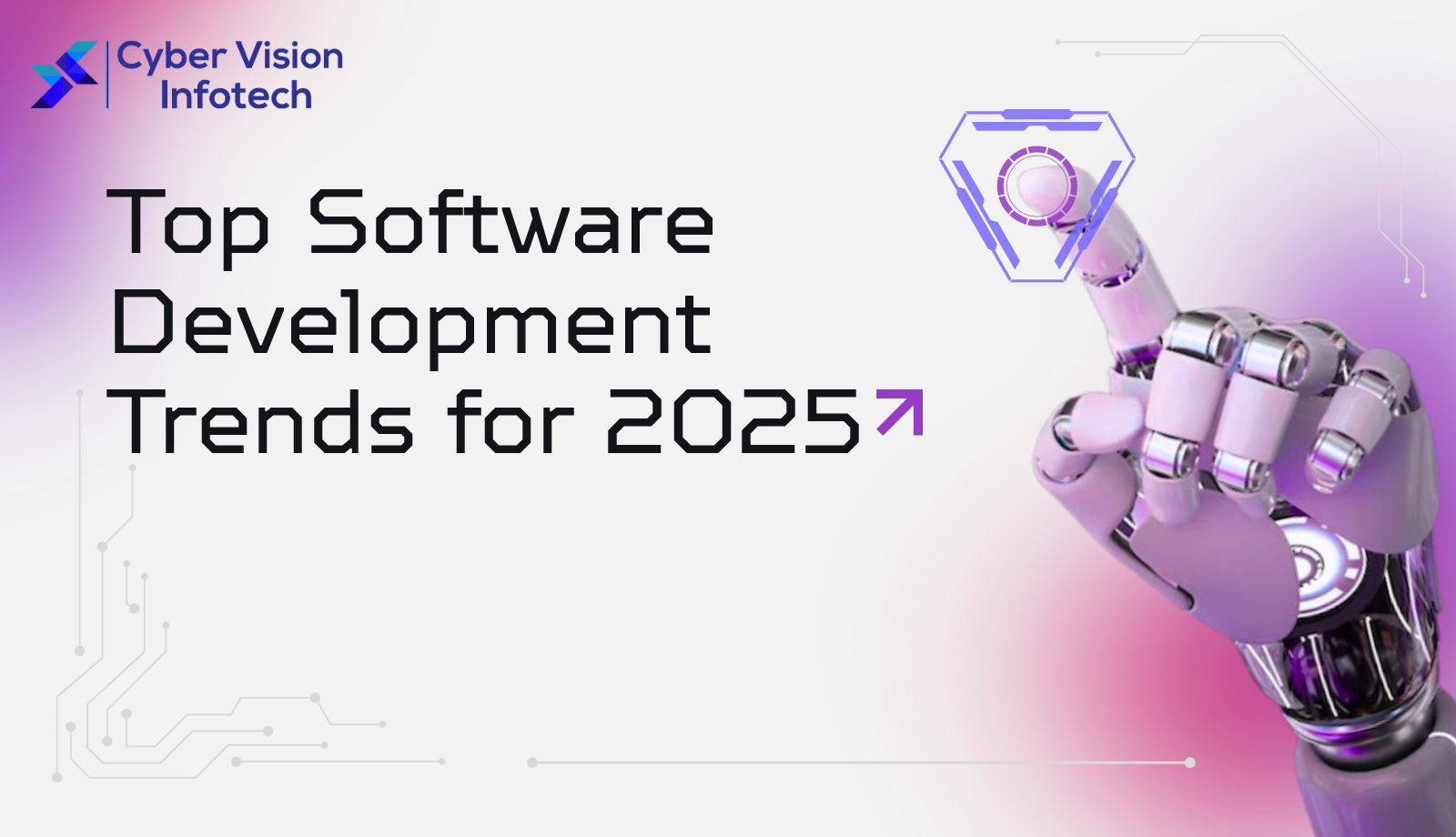Staying ahead of the curve in the ever-evolving world of software engineering means understanding software development trends before they reach the mainstream. As organizations race to innovate and maintain competitive advantage, developers and technology leaders must embrace the latest trends in software development to build scalable, resilient, and user-centric applications. This deep dive explores the most impactful trends in software development for 2025 – empowering teams to optimize workflows, accelerate release cycles, and deliver cutting-edge solutions.
1. AI-Driven Development and Generative Coding
Artificial intelligence is no longer a niche experiment; it’s reshaping daily engineering tasks. In 2025, expect:
- AI-powered code assistance that generates boilerplate, suggests optimizations, and auto-completes complex algorithms with higher accuracy.
- Generative coding tools embedded into IDEs, enabling natural-language prompts to scaffold entire modules or microservices.
- Automated testing bots that write, run, and fix unit tests based on code changes to ensure continuous quality.
These capabilities reduce manual effort, minimize errors, and let developers focus on architecture and innovation.
2. Cloud-Native Everything
Building for the cloud remains a cornerstone of modern architecture:
- Serverless microservices accelerate deployment by offloading infrastructure management to cloud providers.
- Container orchestration at scale, using Kubernetes and its successors, ensures resilient, self-healing clusters across multi-cloud environments.
- Edge computing integration, moving computation closer to users for ultra-low latency—crucial for IoT, gaming, and AR/VR applications.
Embracing cloud-native patterns enhances agility, availability, and cost efficiency.
3. Low-Code and No-Code Platforms
The democratization of development continues as non-technical stakeholders take greater part:
- Low-code platforms enable citizen developers to build complex workflows via drag-and-drop interfaces while integrating with enterprise systems.
- No-code solutions rapidly prototype customer portals, chatbots, and internal dashboards—slashing time-to-market for MVPs.
These tools complement traditional engineering by handling routine use cases and enabling professional developers to focus on custom, high-impact features.
4. DevSecOps: Security at the Speed of DevOps
Security can no longer be an afterthought. DevSecOps integrates security checks throughout the delivery pipeline:
- Shift-left testing injects automated vulnerability assessments into code commits and pull requests.
- Runtime threat monitoring uses AI to detect anomalies in production and trigger real-time remediation.
- Policy-as-code frameworks enforce compliance across multi-cloud and on-premises deployments.
Embedding security in development and operations reduces risk and compliance hurdles while preserving rapid release cadences.
5. Observability and AIOps
Visibility into distributed systems is paramount:
- Unified observability platforms correlate logs, metrics, and traces in a single pane to pinpoint performance bottlenecks.
- AIOps engines analyze telemetry at scale to predict outages, auto-scale resources, and recommend configuration changes.
By investing in advanced monitoring and AI-driven operations, teams can maintain reliability and achieve five-nines uptime.
6. Blockchain Beyond Cryptocurrencies
Blockchain technology is expanding into enterprise workflows:
- Decentralized identity management enhances privacy and security for user authentication.
- Smart contract automation powers transparent supply chains and financial instruments.
- Interoperable ledgers allow data exchange across industries while preserving audit trails.
Innovators leverage blockchain to build trustless systems and streamline multi-party collaborations.
7. API-First and Event-Driven Architectures
Loose coupling and real-time responsiveness define modern integrations:
- API-first design ensures every service is accessible, documented, and version-controlled via open standards like OpenAPI.
- Event streaming platforms (e.g., Kafka, Pulsar) decouple producers and consumers—delivering high-throughput, fault-tolerant messaging for real-time analytics and workflows.
These patterns accelerate feature adoption and facilitate inter-team collaboration.
8. Quantum-Inspired Algorithms
While universal quantum computers are still emerging, quantum-inspired computing unlocks new problem-solving approaches:
- Optimization solvers emulate quantum behavior on classical hardware to tackle scheduling, logistics, and complex simulations.
- Quantum machine learning kernels provide novel methods for classification and clustering on high-dimensional data.
Forward-thinking teams are experimenting with hybrid pipelines to prepare for true quantum advantage.
9. Sustainable and Green Coding Practices
Environmental responsibility is translating into development guidelines:
- Energy-aware algorithms optimize for minimal CPU and GPU consumption, reducing carbon footprint.
- Server utilization analytics guide infrastructure right-sizing and auto-suspension of idle services.
Sustainable software engineering aligns corporate values with global climate goals.
10. Human-Centered Design and Accessibility
Exceptional software delivers inclusive experiences:
- AI-driven UX testing automates accessibility audits against WCAG standards and suggests remediations.
- Voice and gesture interfaces expand reach to users with diverse abilities and devices.
Prioritizing accessibility not only broadens market reach but also mitigates legal risks.





